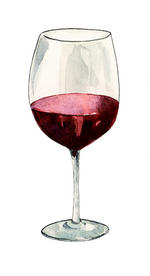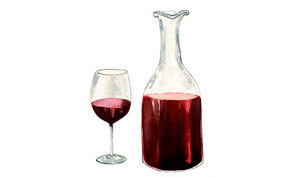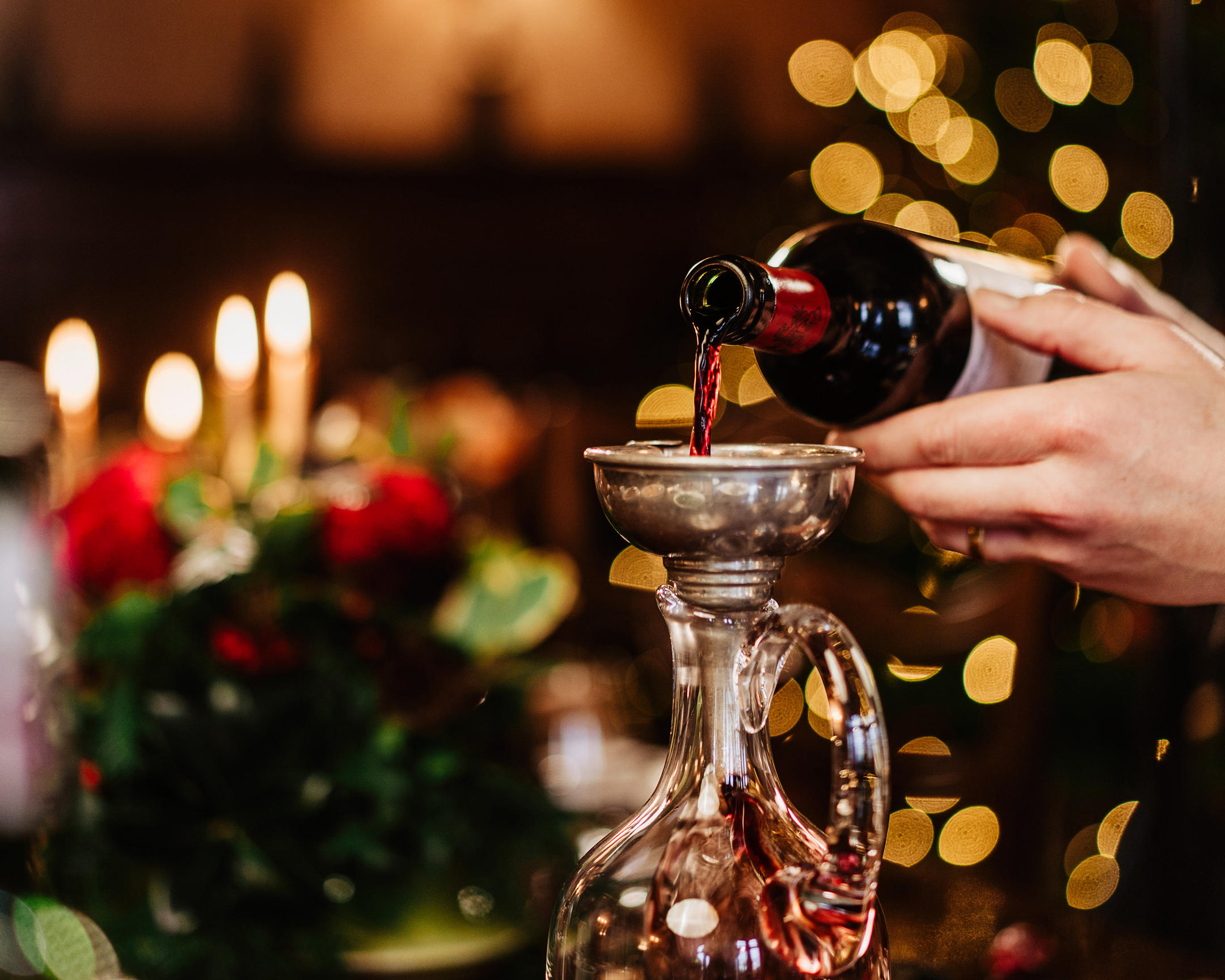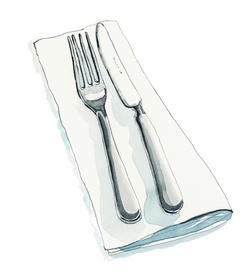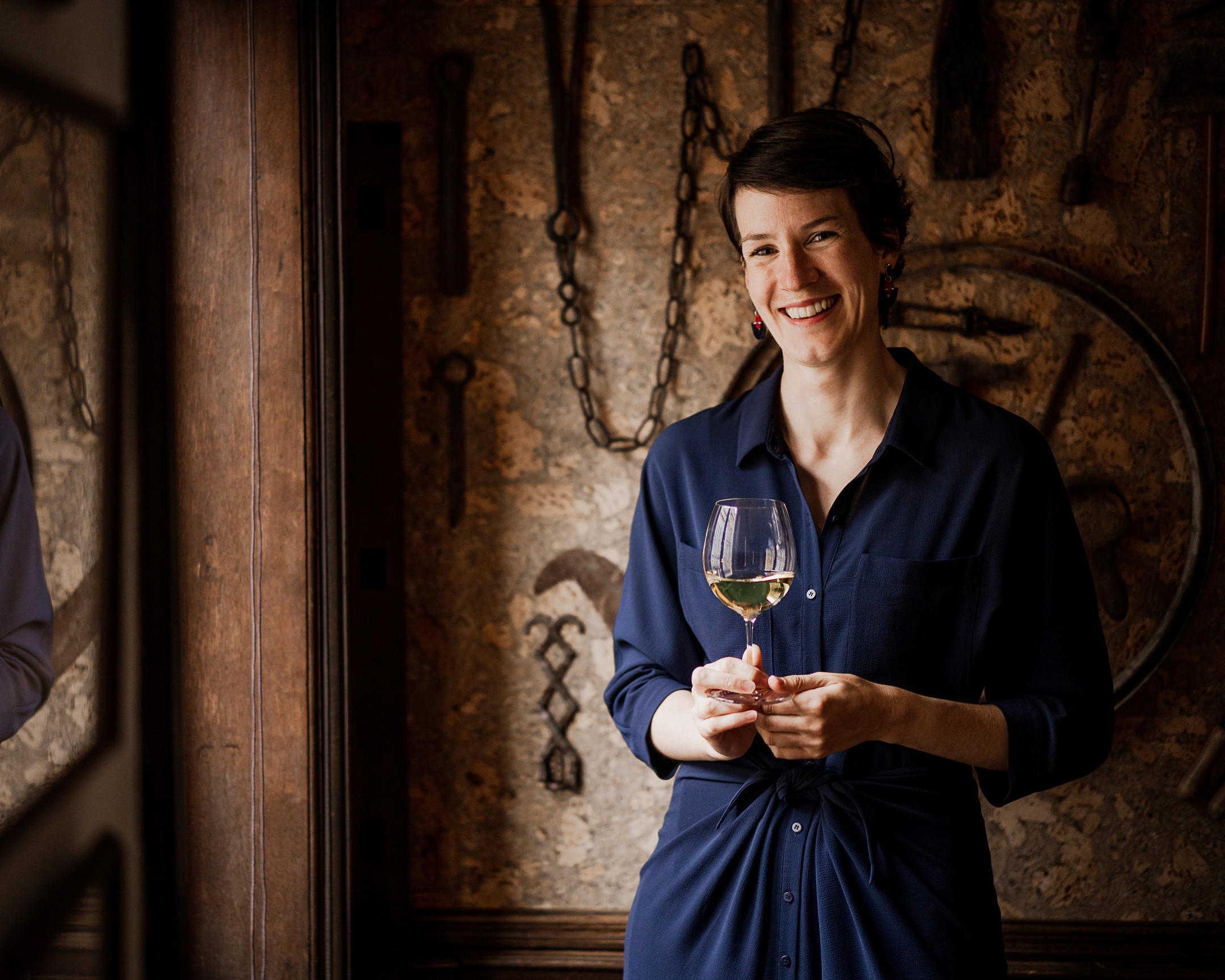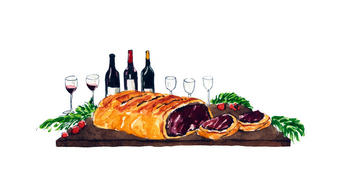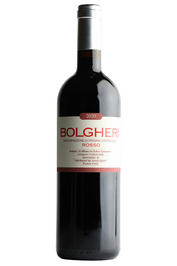
Home > Editorial > How to make the most of magnums this Christmas
FIVE-MINUTE READ
Nothing makes a statement quite like a magnum of fine wine. But beyond its magnificence, a bigger bottle also helps a fine wine to age more slowly, while offering plenty to share around the Christmas table. Below, you’ll find a collection of stories and advice to help you make the most of magnums over the festive season.
JUMP TO
For Joshua Friend, Christmas is all about creating special memories with friends and family – and magnums, he believes, are the secret ingredient that brings it all together.
Christmas is coming, but for me, it can never come soon enough. It’s my favourite time of the year, all about family, friends, good food and wine. When I recommend wines for my clients to drink, I often rave about magnums at any given moment, which led to someone asking me a very simple question: why are magnums better?
The first thought in everyone's head is an obvious one: let’s face it, they are incredibly Instagrammable. But let’s briskly brush the hashtags and Insta-nonsense aside and focus on what really matters: the wine.
They’re considered to age better than 75cl bottles; the greater volume within the bottle allows for a slower interaction with oxygen, leading to an arguably better wine in the long term. To give you a recent example, I recently tasted a magnum of 2014 David Moreau, Santenay, Premier Cru, Clos de Rousseau: it was singing, still incredibly fresh with great acidity and plenty of crunchy red fruit. Alongside a 75cl bottle of the same wine, the difference really showed. The smaller bottle was still bright, but more autumnal, with notes of bonfire, smoke and forest floor. Yes, it was delicious, but it showed its age in comparison.
There’s a sense of awe and theatricality when you slam down a magnum in the middle of the table. Burgundy winemaker Jacques Devauges, of Clos des Lambrays, explained it to me quite well. He said that if you put down a normal-sized bottle of Clos de Lambrays, people will start to think, “Is there going to be enough to go around? Paul certainly likes to drink – he’d better not have it all!”. Whereas with a magnum, all anxiety disappears. You’re guaranteed at least your fair share of a wine you’ve been dying to taste. It brings a sense of calm.
Typically, when I think of magnums, I think of special occasions. My cellar is stocked with an array of magnums, with many future Christmases in mind. The longevity of the ageing brings a sense of assurance that these wines will perform exactly as they should, when the moment to uncork them arrives.
Magnums are still a bit niche. You might not have the space in your fridge or cellar – especially with the turkey taking up a whole shelf – but my advice would be to make room. Celebrations and Instagram likes aside, magnums facilitate something more special: sharing magical moments with friends.
Henrietta Gullifer is anticipating the return of the magnum, signalling the welcome opportunity to host large parties again. Discover her advice for serving a fine wine magnum to your guests.
This is going to be the year of the magnum. Gone are the muted, intimate festivities of last Christmas; this time, it's all about large parties, extended family get-togethers and prolonging the festive season as much as we can. I believe a magnum is the best way to get into the celebratory mood, as well as being perfect for larger gatherings.
Magnums may seem a little daunting, particularly when it comes to decanting the wine. I’m afraid that opening the bottle early won’t give you the same benefit as decanting, as the oxygen exposure is minimal. The main purpose of decanting is to aerate the wine slightly; exposing it to oxygen will soften the texture and enhance the flavour. An older wine may also need to be filtered and decanted to remove any sediment that has collected over the years as the wine ages. The physical act of pouring is more important than the shape or size of the decanter that you use – especially as many of us don’t have magnum decanters around.
Any large jug should work. Ideally, I’d recommend investing in a good filter funnel. Pour slowly, keeping the bottle on its side to reduce the chances of transferring the sediment. You can serve your wine from the jug. Alternatively, you could pour the wine back into the bottle – this is known as double decanting – for a little wow factor. Bear in mind that, for this, you will need a funnel. I would also recommend rinsing out the bottle. There isn’t a strict time frame for decanting wine, but I recommend doing it a few hours before, which gives you plenty of time.
Magnums and dinner parties are a perfect match for one another. Events Manager Barbara Drew MW shares her top tips for throwing a dinner party you’ll enjoy just as much as your guests will.
The perfect host is one who looks after their guests’ every need, yet makes it seem effortless. One of the key things to bear in mind is that nobody wants to be made a fuss of. For instance, if there are a mix of omnivores and vegetarians at your dinner party, make sure your dishes work for everyone so that one group doesn’t feel like you’ve had to do lots of extra work for them.
A hands-off approach also works well when it comes to drinks. No one likes that awkward moment when their glass is empty, and they have to catch the attention of the host to offer them a refill. To avoid this, I place a selection of drinks on the table and allow guests to help themselves. Not being overly attentive can often be the most hospitable approach.
If you’re thinking about what kind of wines to match with your dishes, think about weight as well as flavour. Lighter dishes need wines with lower alcohol, lighter body and fewer tannins. Rich, heavy dishes can match wines with plenty of tannic grip and high alcohol.
But, most importantly, don’t overthink it. All too often, I see hosts being too modest about their food. If your soufflé is a bit flat or the meat is a little overcooked, nobody cares. Everyone is there to have a good time. If they wanted perfection, they’d go to a Michelin-starred restaurant.
Dinner parties are not competitions – they should be fun and relaxed. There are some truly sublime food and wine matches in the world, but if you have a nice bottle of wine, and a nice plate of food, I think you’re set for the evening.
Michelin-trained chef Stewart Turner is used to cooking for a crowd; he does it every day from the kitchens of No.3 St James’s Street. Here, he imparts a few quick wins when it comes to preparing dishes for a festive dinner party.
Large formats are always a bit of a showstopper. They’re great if you’ve got a full house or if you have a crowd coming over at Christmas – or any time, for that matter. Preparation is key: you want to enjoy the party as much as your guests. Being stuck in the kitchen all night is no fun – that I can tell you from experience! My top tip is to think about your menu carefully. Consider which dishes can be prepared in advance, like canapés that just need a quick finishing touch, or a starter that can be pre-plated.
Like a magnum, a large sharing dish has a real wow factor. Think beef tomahawk with a gratin dauphinoise or a whole roast turbot. A classic wellington is always a winner, whether it be beef, venison, or vegetable. The whole thing can be done in advance – it just has to be cooked at the last minute. I recently made a salmon wellington, which was a real success. Cooking on a theme is also a great idea. For instance, a spiced, slow-cooked shoulder of lamb with couscous, flat bread and homemade hummus makes a great Levantine feast, and most of it can be prepared in advance.
Top wine recommendation
2020 Bolgheri, Rosso, Grattamacco, Tuscany
While most vineyards in Bolgheri lie on flat alluvial plains, Grattamacco’s are on slopes, some reaching up to 200 metres’ altitude. This gives the wines of this organic estate more energy and freshness.
The 2020 Bolgheri Rosso has an attractive and distinctive Mediterranean nose of wild herbs, bell pepper, cassis, rosemary and peppery smoke.
The palate is silky and vibrant: black cherry layered with spice, with supple tannins and tangy fruit charm. This is a testament to the expert winemaking of Luca Marrone and the exceptional terroir of Grattamacco.
Drink now to 2028.






